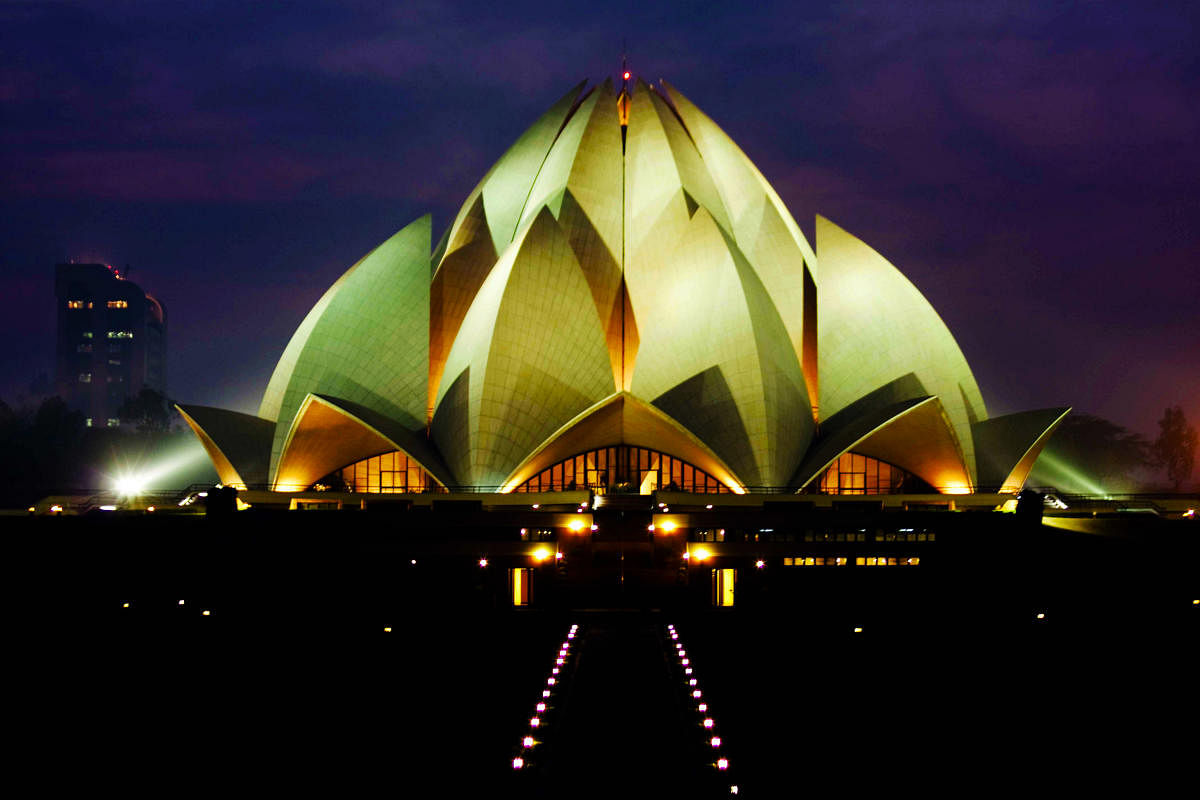
Dodging the din at Chandni Chowk, a morning of handicrafts, attars and belly pampering at the legendary Parathe Wali Galli and I finally decide to immerse myself in some sacred solace. The bustle and grime, the traffic and the crowds, all seem to dissolve in an overwhelming stillness. India’s hyper-paced national capital houses an abode of solace that offers a breath of fresh, rejuvenating soul oxygen within the calming environs of what looks like an all-encompassing lotus.
While Delhi’s shopping havens, eateries and monuments magnetise the multitude, the Baha’i House of Worship, popularly known as the Lotus Temple stands as a symbol of spiritual solace and pluralism visited by thousands from all over India and the world each day. It is considered one of India’s most popular spiritual tourist attractions and one of Delhi’s noteworthy landmarks.
Pillaring pluraism
In 19th century Iran, a spiritual visionary by the name of Sayed Ali Muhammad Shirazi declared himself the Bab or gate in Arabic and began the ‘Babi Movement’. He prophesised the coming of a ‘Manifestation of God’ who would transform humanity’s spiritual destiny and that was none other than Hazrat-e-Bahaullah, the founder of the Baha’i or ‘Bahai’ Faith. Having faced extreme persecution and exile, Bahaullah received divine revelations which pillar the faith and its followers.
Universal brotherhood and pluralism being the faith’s key principles, Bahaullah’s famous words “The earth is but one country and humankind its citizens” summarise his core teachings and have touched millions of hearts around the world. He taught that all prophets and seers, including Krishna, Buddha, Christ and Zoroaster were messengers of one supreme creator, the essence of their message being one and the same. India was among the earliest countries outside Iran to receive the Baha’i faith and the community with nearly 2.2 million nationwide followers today, constitutes one of India’s tiniest and lesser-known minorities.
Architectural marvel
A unique masterpiece of architecture, the temple was built in the shape of a giant lotus by Iranian architect Fariborz Sahba in 1986 and has won several awards ever since. In 2001, the CNN even deemed it the most-visited building in the world.
The sprawling temple building is composed of 27 free-standing marble-clad ‘petals’ arranged in clusters of three to form nine sides, with nine doors opening onto a central hall with a height of slightly over 34.27 metres and a magnificent capacity of 2,500 people. Within the 26 acres of the complex, stand nine tranquil pools and ponds that offer respite from Delhi’s blistering summer heat.
The sacred writings of not only the Baha’i faith but also of other religions can be read or chanted inside the House of Worship, regardless of language. Musical devotional offerings are a regular feature here.
The Bahai House of Worship in New Delhi, like every one of its counterparts in many other countries, is renowned for its unique architecture and stands as a symbol of our faith which preaches the unity of God and brotherhood of man. It encourages people irrespective of faith, race, colour, gender and nationality to experience peace, connect with the creator and with their own essence.
Sharing several technical elements with its other global counterparts, the temple derives its structural nuances from Baha’i scriptures and from the teachings of Bahaullah’s successor Abdul Baha. Devoid of photographs, statues, images, altars and pulpits, readers at the House of Worship usually stand behind simple portable lecture stands.
On March 1 began the yearly 19-day Baha’i sacred fast. Nowruz, the Persian New Year as per the Baha’i solar calendar, falls on March 20 this year and marks the beginning of spring. It is considered a celebration of togetherness, devotion and acts of kindness that exemplify the oneness of humanity’s essence.
It is a day of prayer, friendship and spiritual bliss that Baha’is celebrate, which Delhi’s famed Lotus Temple aptly symbolises.